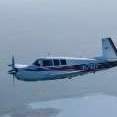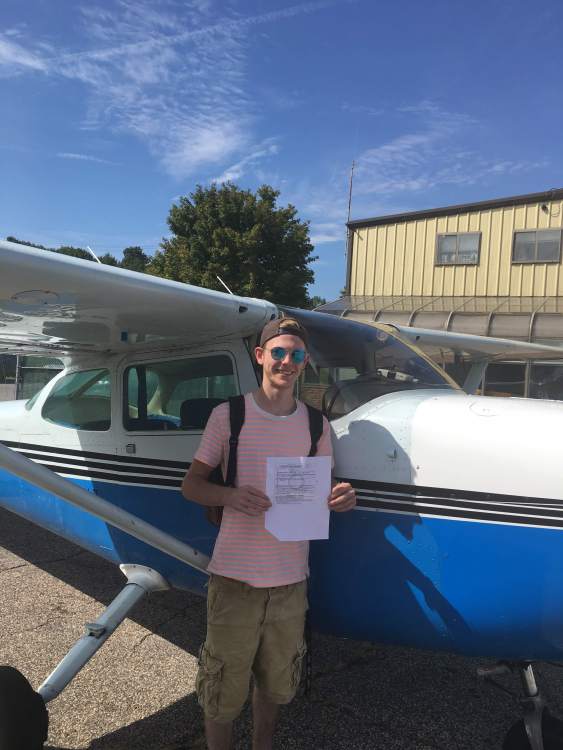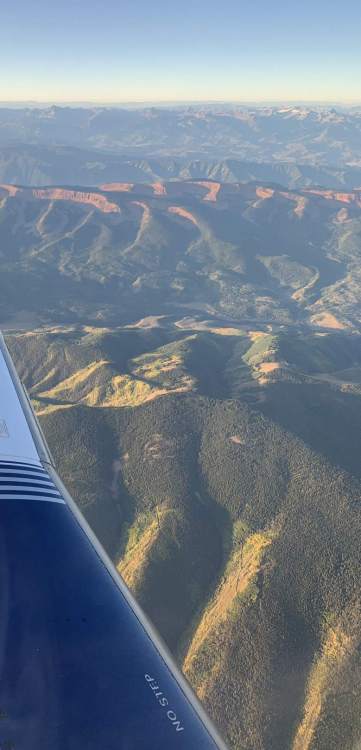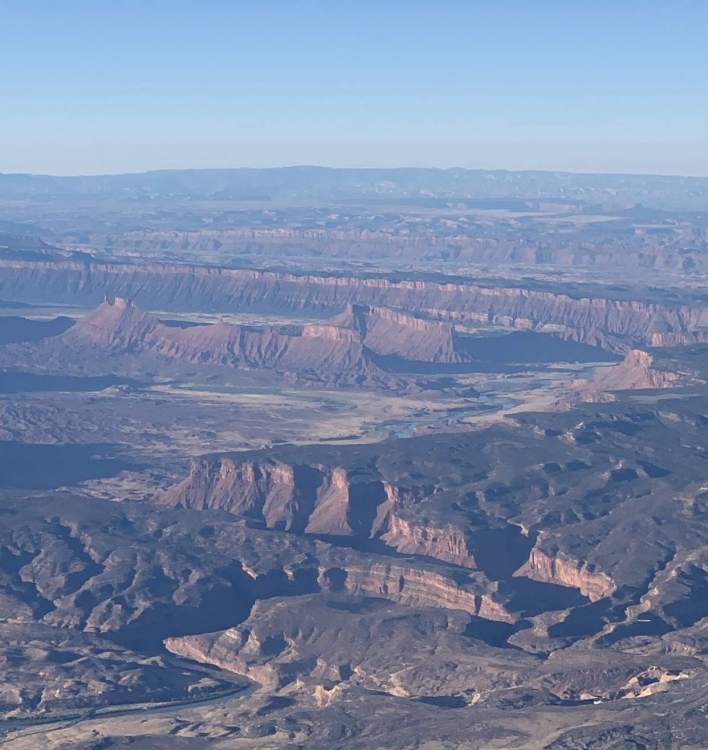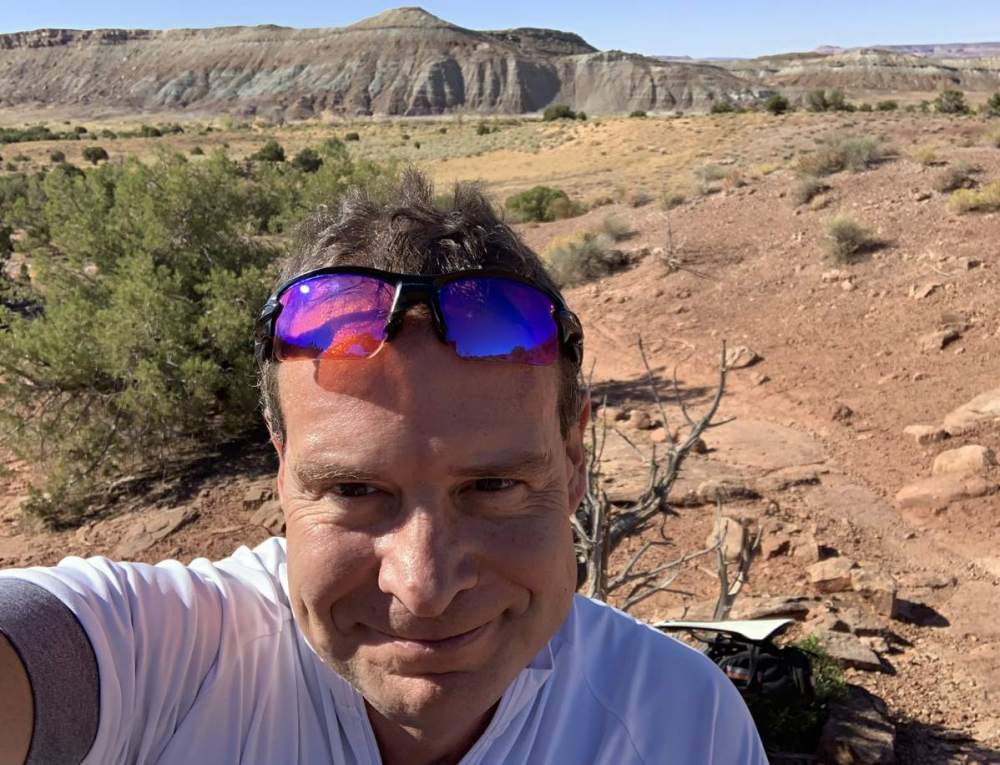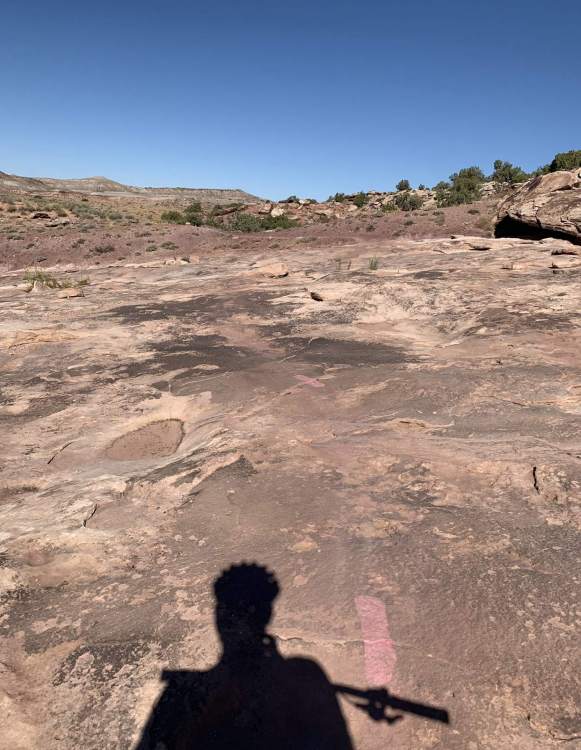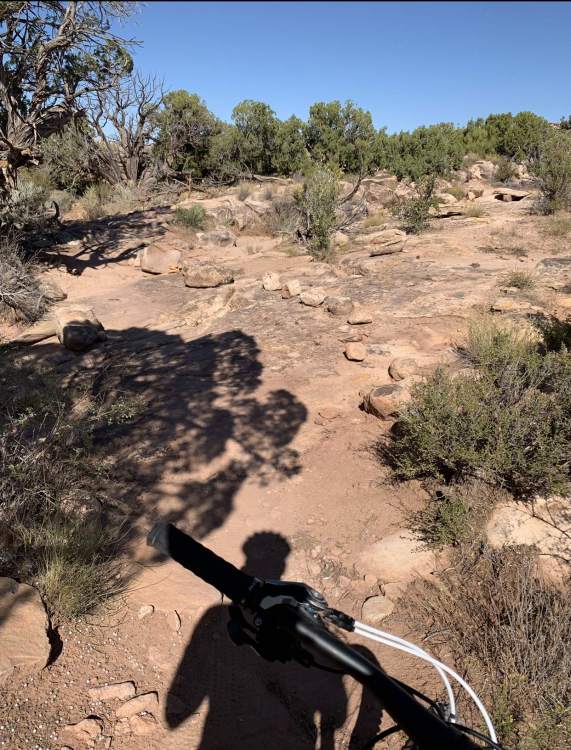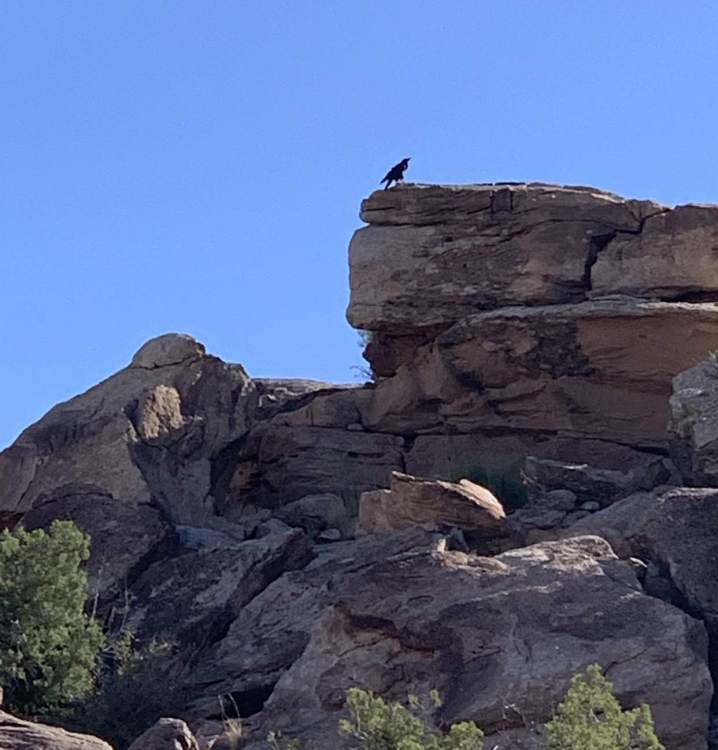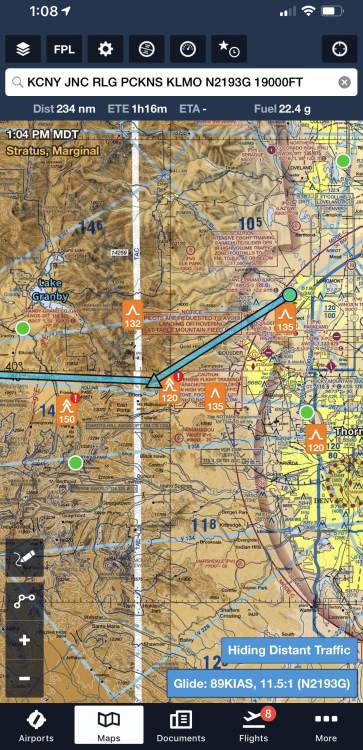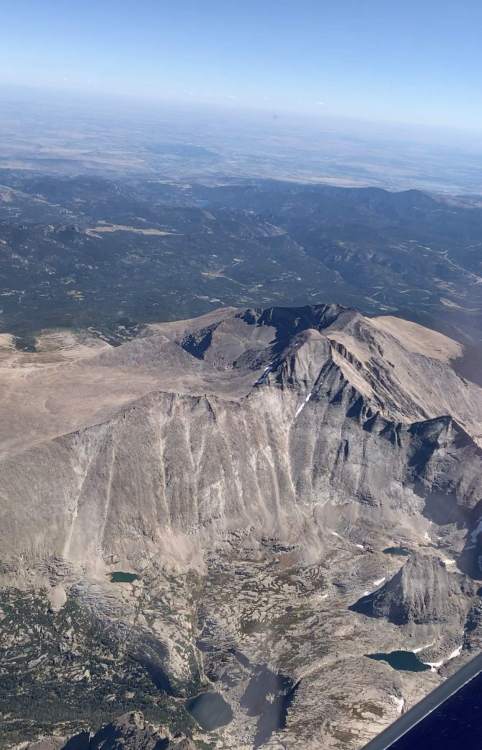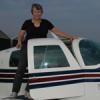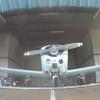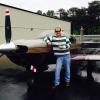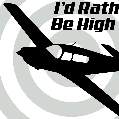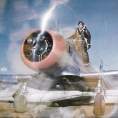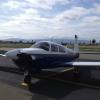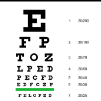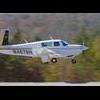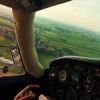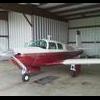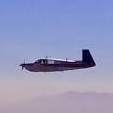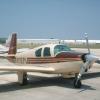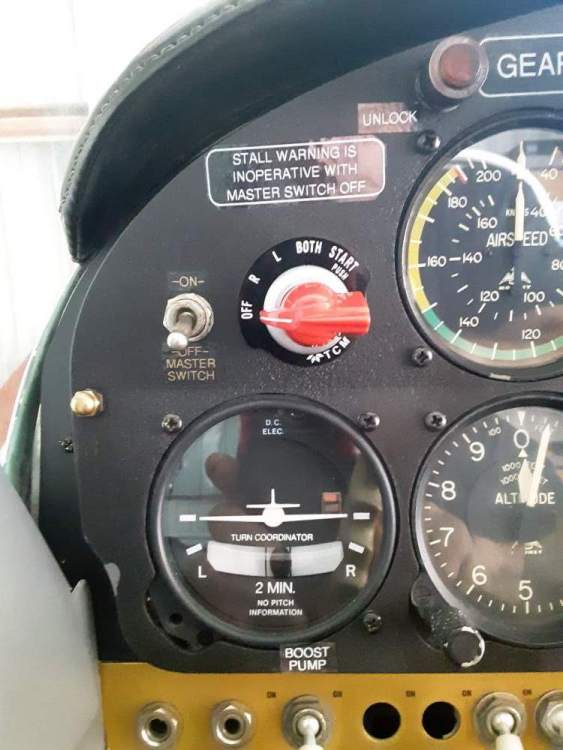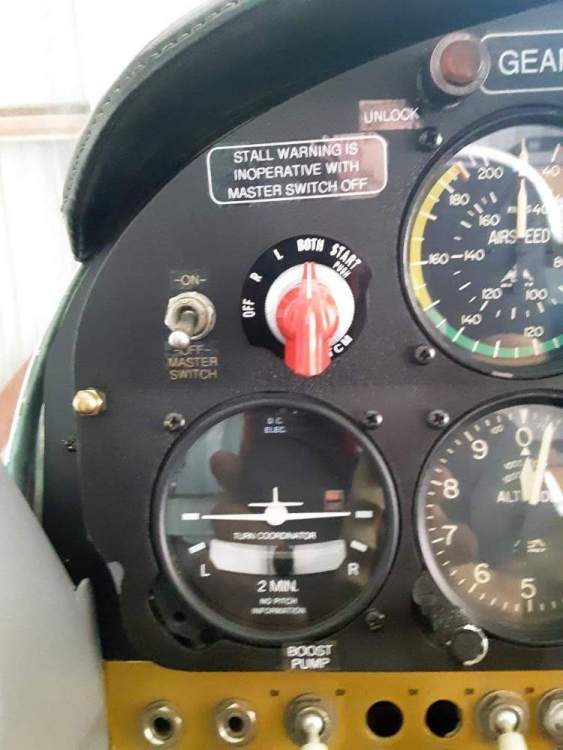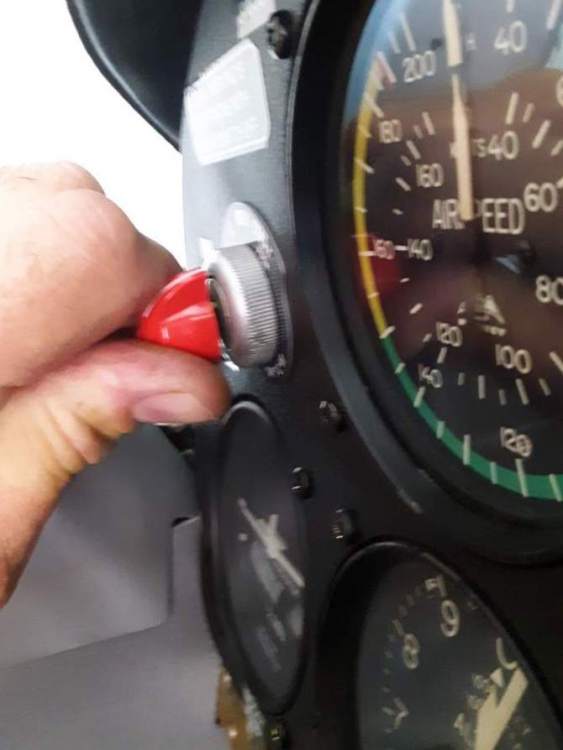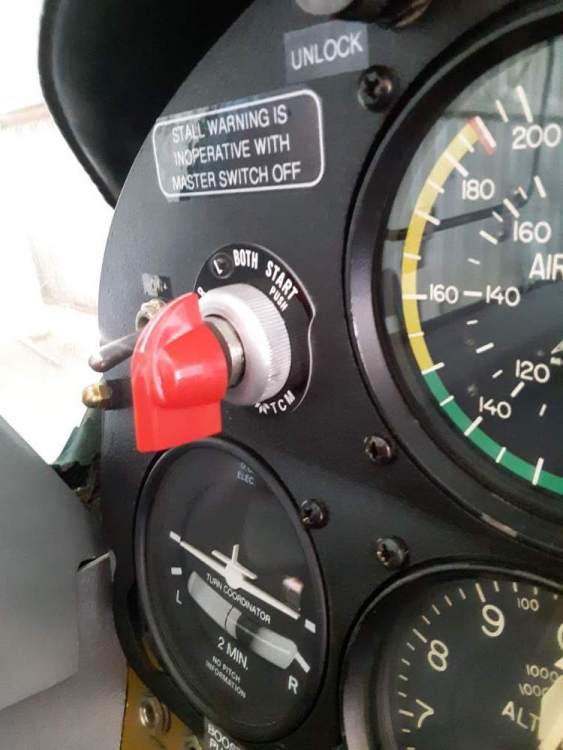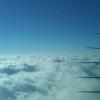Leaderboard
Popular Content
Showing content with the highest reputation on 09/23/2019 in all areas
-
8 points
-
Quick flight KLMO- KCNY for a little mountain biking in Moab this morning. Photos: Rockies (leaves starting to change), Moab, Dino Flow trail, fellow aviator, Turbulence PIREPS below 16,000 so I changed from flight following to IFR (already had a filed IFR flight plan just in case) at FL 190- smooth, Longs Peak.6 points
-
You can always tell a New Yorker, but you can’t tell him much! Or something like that.4 points
-
Pretty sure it is in my 75 F Operators manual. It was one of the lines that stuck with me and I adhere to it. I believe you have the lower flap speed and gear speed. I watched to the end of the video and wholeheartedly agree with what he is teaching. With the mooney wing and the more power when the fan quits you have to shove the yoke forward. If you have never done it go up and put it in takeoff configuration and do a couple. I think this is also a reason to get the gear up soon as the plane is flying. I saw one video of waiting till all usable runway to pull the gear up. Just means you are slower and closer to the ground.3 points
-
Came back from Bromont yesterday (great two-and-a-bit hours of flying. One to go. 1/2 to show Serge and one to come home) and this morning I saw this. We have had lots of discussions on this forum about AoA indicators and I do intend to get one. But this video describes how the airlines do it. Not an instructor, but I like the idea of creating a safety margin (albeit artificially). So your mileage may vary. I have modified the Vspeed page in my checklist to add this speed. Turns out for my E model it is 94 MIAS or 81 KIAS (somewhat higher than Vs). So my intent is to stay above that speed unless one of the two following conditions is met: On approach through the FAF, or Manoeuvering to practice stalls. One GA fatality every four days? Enjoy the video.2 points
-
Yes, he’s very safety oriented for a 9 year old. Either that, or he likes to catch dad messing up. He wants me to put a sticker of a guy missing a head on the cowling to remind people not to get in front of the prop. I guess I should stop telling him stories from work...2 points
-
2 points
-
Me too, always because of security reasons, the credit card company wanting to know that it is me making the purchases. That is something that I welcome. I typically get hit with a text when that occurs, and can clear it right up. I have two millennial sons, one of which is a pilot. I like giving them a hard time whenever possible!2 points
-
I have enough information to go forward on the planes, altitude, equipment, ratings and so on to last me till I decide. Just want to thank everyone for what they wrote. My first topic of Ovation vs Ovation 3 has gotten over 50 responses. Enough Dan2 points
-
Skip, it surely doesn't have to be much added workload and its surely a big improvement. The extra workload is to tune in the Freq and identity it which should be done before you get to the final approach segment, which you would be doing already flying a VOR approach. Then it's easiest to monitor the VOR using a bearing pointer on a glass HSI - that makes it downright trivial! Without the glass, you'll need to twist in the Final approach course radial on a second CDI and upon passing final you can keep kit in your scan while navigating off the GPS taking you to the MAWP. But by monitoring you'll know if you lose the raw data. But by setting it up before you get to the FAF you won't have any extra twisting to do as you pass the FAF (remember you'll be navigating to the FAF with GPS, no need to use the VOR for that unless you really do want to increase your workload). Only thing we can't do is navigate past the FAF off the GPS if the VOR (or NDB) goes down.2 points
-
I guess my view of a 3 blade MT or any 3 blade of a 4 cylinder is kinda dim. Don’t have any real world experience with that combination though.2 points
-
I am absolutely thrilled with J.D. at SWTA in Smithville. Highly recommend him to anyone looking for a maintenance shop the you can fully trust to have your best interest in mind. I'm parked at New Braunfels with my K waiting to get in to a hanger. Sent from my SM-G930V using Tapatalk2 points
-
I can promise you I'm the most unusual millennial you'll ever meet. I've even got a work ethic. Sent from my Pixel 3 using Tapatalk2 points
-
As a world traveler I will put in a shameless plug for the Delta Skymiles AMEX card. Besides miles and your first bag free, you cannot beat AMEX's use of "big data" to track you and keep you out of "fraud purgatory. I have had AMEX call me and say someone was using my card but they saw (somehow) I was flying N5ZU and to go ahead and use my compromised card until I got home and they would track me and shut off everything else outside of my travels. A while back in the middle of vacation I got a call from AMEX while in LAX. They said they stopped some funny business in New Jersey with my card. I told them I was about to jump off for Australia the next day what can be done. The agent said, "Oh yes I see you are staying at the Marriott Circular Quay in Sydney, is that correct? I said, "Yes" and he said, "No problem, we will have a card delivered to you there". I arrived bleary eyed at the Marriott and the desk said, "Oh yes AMEX called and said check you in under your old card and they would be here shortly with your new, they asked to be notified of your arrival is that OK?". I barely had set the bags down in my room when there was a knock on the door. It was Jason from AMEX.....with my new cards. You just cannot beat that kind of service. Now VISA. I rarely use it, but sometimes they only take VISA or MC. So before I leave for London I tell VISA I will be in London. I go to use it and blam! Declined. I call VISA. They said, "Well you are well outside of your normal range. I said, "Really? What bank issued my Visa card." Agent says, "Delta Air Lines Employees Credit Union". I said, "Do you suppose Delta employees do a lot of international travel?" VISA, "Well I would not know" You cannot believe the fraud idiocy at VISA. Point is this, when I flew corporate, when I traveled as an airline crew member, now that I am retired you cannot beat AMEX. If you don't have it, get it because if you travel they are the only card outfit that has your back. They have never let me down.2 points
-
I just had to send my Garmin gns 480 in and I got lucky because I had only a few days left and after that the Garmin 480 is no longer serviceable by Garmin. The flat rate was $1100.00 and has to be sent off from a Garmin dealer. I had mine back in five days. good luck, Ed2 points
-
Like others, I have several credit cards with plenty of limit to choose from. The other thing my wife and I do is carry a dis-similar collections of cards. We have the main card we both carry, and other cards the other does not carry. That way if a wallet is lost and cards must be cancelled we have non-compromised cards with us. I also carry a pack of checks (remember those?) in my flight bag. Larry2 points
-
2 points
-
I dont understand why you would get TKS if you only plan to fly in VFR. If you wouldnt fly in bad weather, the TKS will never get used. You can onky get icing with moisture, that you wouldnt ever fly in.2 points
-
Looks like I'm going to partner with my son to manufacture these things. The new design is a more robust slide-over cap that clamps an unmodified key. There will be an option that incorporates a key ring as well. Stay tuned!2 points
-
I'll be driving out to Florida early on Thursday with about 180 quarts of oil (one for each Mooney Summit attendee). I look forward to meeting many of you in person for the first time! Be sure to stop by on Friday and pick yours up - 3 options to choose from: Aeroshell 15W-50 Aeroshell 100W Plus Phillips XC 20/50 Parker Airspeed Insurance Agency 214-295-5055 Parker@airspeedinsurance.com1 point
-
Should be using Camguard as standard. Mike Busch has ample evidence on this in his "Engines" book. My TSIO 360-LB flies on Phillips 20W50 year round (NE based too). Should probably do W100 during summer, but too much hassle to switch back and forth. In winter you want the 20W50.1 point
-
Don't do that again! Yes, I know, one of the more unhelpful statements I've come up with Even a 60W incandescent light from a few inches away is nothing to sniff at...1 point
-
My son scolded me last week for getting close to a propeller “without knowing where the key is.” Seems like a bright red one would be easy to spot on the dash. Great idea!1 point
-
Thanks much, EricJ - much appreciated! The whole bulb debate may seem a bit absurd, but it's actually a fascinating dive into the arcane world of specs and standards that lurks behind the Part 91 stuff that us mere owner-pilots try to comply with. I'm an attorney and I'm used to in-depth research, but the amount of historical and current data / information you guys on this forum come up with is truly impressive.1 point
-
1 point
-
I have been pretty impressed with the MT props on 25 Diamond DA 40 NG aircraft. Highest time is almost 1200 hours (year old). About halfway to TBO. Taking the abuse of a flight school pretty well. No AD's to worry about. Good factory support. No rpm restrictions on the Mooney. If and when I need a prop for my M20F, I'd get one. Just plan ahead, very long lead times.1 point
-
as much as I don't like mega banks and hear bad things about them, BoA will text me immediately if they deny a charge. As a backup I always keep 2 different cards from completely different companies/networks...no cash on me either...hardly ever.1 point
-
Mr Carter, is that a dispersing agent, or a displacement type you are describing? @carusoam1 point
-
1 point
-
A few years back I was stationed in Germany flying VIP business jets all over Europe. I had a trip when my card stopped working as well. I had already notified the card company I was moving to Germany and all had been fine since I arrived. The night the card stopped working I called them up. They said there was suspicious activity on the card. All in the same day my card was used in Germany, Turkey, and then Portugal. I had to explain that I fly jets for a living. I bought a couple Cokes in Germany before my flight. Had lunch in Turkey when we were picking up our passenger. I had dinner in Portugal when we dropped him off. I have never had a problem since.1 point
-
EricJ and Cliffy, I'm not an engineer but I'd sure like to hear your responses to my questions above -- the ones about Whelan claiming TSO under C30b, a standard that no longer applies, and the three questions I asked right after that regarding TSO C30c, why incandescent position light bulbs aren't marked "TSO," and why I can't just replace a 7512-12 bulb with a 7512-12 bulb. I'm interested in this thread, but I can't believe aircraft owners need to have an engineering degree just to replace a light bulb. I'm perfectly happy to rely on my IA as well as the article in the October 2019 AOPA Pilot magazine. Maybe the real question is: "How many MooneySpace members does it take to change a light bulb?"1 point
-
Give them each a good look... It is a real comforting feeling when you find something wrong, before replacing it... It really helps if you find a seal is crumbling and no longer working when you try to remove it... Or part of a seal is missing... That kind of thing... Best regards, -a-1 point
-
I am not very good at math. But I suggest you go up and try it. In whatever they were flying in the video 4 seconds was too long. Like they were doing Feel light in the seat type of push over. This was kind of fun https://www.boldmethod.com/cfi-tools/forces-in-a-climb-or-descent/1 point
-
I talked with someone named Trent. He said he'd pass it along to someone named Sean. We'll see. I'm kinda at their mercy right now. I know it happened with them, I just don't have any proof.1 point
-
Remember, you are trimmed for 170 MPH and your inertia vector is horizontal . As we all know, the Mooney is a trim hog and in cruise, it is nearly full nose-down trim in cruise (at least my "F" was). Try this... at altitude, set yourself up in an initial climb profile. Gear and flaps hanging out (if you use them). You now have an upward inertia vector. Yank the power and watch how fast the speed bleeds. In addition to this, make a hard floor and envision trees say, 100 feet below you. The thrust line is a slight downward vector, so at slow speed, high AOA, the engine is pulling downward a bit. The initial loss of the downward vector will initially create a pitch-up moment. It's all about AOA and keeping the buffer from critical AOA. A small change in direction vector with a high AOA (high drag) will move you toward that critical point rapidly.1 point
-
Well I have multiple cards and have had to use them before for similar reasons. I also have several hundred in cash for those rare times when a card just won't do. However, when the field is deserted but for you and the self serve pump and it wont take your card I guess you are doing some very strategic planning to get to another field with a human that can take cash money or the card for fuel. Then you can always spend the night in the plane or uber to the nearest lodging opportunity. Oh yeah some places don't have Uber either. Fly to enough places and sooner or later you will find that place above. Plan your fuel wisely my friend.1 point
-
You are being declined because you are a millennial. If you were a Boomer, you would have no problem at the pumps!1 point
-
That's a good question, as a lot of industry standards have private certification organizations that go with them, e.g., IEEE 802.11 is an IEEE standard, and the WiFi Alliance is an industry organization that does testing and certification of that standard. Once they test it and bless it, it can have the WiFi logo and trademark. That sort of thing is fairly common in industry, but in the case of TSOs and STCs and all that stuff I think it all flows from the FAA. As far as greater or lesser degrees of blessedness from the FAA, there is a doc here: http://fsims.faa.gov/WDocs/8900.1/V04 AC Equip & Auth/Chapter 09/04_009_001_CHG_198A.htm that contains this definition: "Meet Minimum TSO-Established Standards. Means that the equipment need not have TSO approval, but only meet requirements set by the TSO." FWIW, that document doesn't use that phraseology anywhere, and I don't know whether any other FAA documents do or not, but at least the concept is known and recognized within the FAA. There are all kinds of standards, and the definition of "standard part" in the link that you posted earlier is pretty basic and pretty much just says if there is a recognized industry standard and the part is compliant, it's a "standard part", and then gives examples like NAS, AN, SAE, JEDEC, and ANSI. Some standards include manufacturing direction, but most don't. Usually the spec is just a description of features that can be tested to assure that the part complies with the spec, whether those be physical dimensions, hardness, brightness, output power, frequency, temperature or whatever depends on the spec or the item being described, but usually how to build it is not part of the spec. It is the job of the standards body to make certain the specification is complete enough to include all of the features that matter for that spec and how they are measured. If reliability is important and some features or functions must be tested to demonstrate the reliability, then that should be included in the spec. How the device manages to meet those specs is typically up to the manufacturer. To the case in point, things like brightness and color matter, because they must be recognizable from a certain minimum distance determined by the standards body (in this case presumably the SAE, unless the SAE doc just references something else). Whether that color and brightness is obtained from an incandescent filament filtered by a colored lens, or by a colored LED, if the specifications are met the functionality is there. If the "how to" is specified, then future innovations of obtaining the desired functionality with less power or less cost or higher reliability or something else can be stifled, and that's generally not desirable. Hence the old-and-busted incandescent stuff and the new hotness LED stuff both are used and both have examples of fully meeting TSO-C30c. The "how-to" probably isn't spec'ed to be incandescent, or the Whelen LED stuff couldn't meet the spec. IIRC the FARs do spec wavelength for the light color, but I don't know whether the TSO does or not since I don't have the SAE spec. For the old-school incandescent stuff the color wavelength is met by the lens filter color. In the LED it can be met by the LED materials. But, yeah, somehow color is specified, I'd guess by wavelength with some tolerance. It's not that big of a deal to make a color lens for an incandescent that provides a certain color, and LED chemistry/materials can do the same thing.1 point
-
I think best glide speed would be better, gives margin of error for a 40° bank and of course in case of an engine out is what you want anyway. We don’t need to memorize another speed. Tom1 point
-
Eagle1671's after-fire turned out to be a cracked engine mount. Problem diagnosed and fixed. Great outcome! But let's return to the subject of after-fire. Experienced Mooney owners already know about this, but since there are a fair number of new folks on the forum, let me describe a dangerous situation that is easily avoided. With my carbureted M20C there have only been a couple of times I've had issues with fuel burning somewhere other than inside the cylinders. One time was years ago when probably I didn't pull the mixture control completely during shutdown, and got a backfire on startup that blew out a muffler baffle. Expensive lesson but otherwise harmless. The other time was recently. After a long flight my son (who is also a pilot with about 100 hours in this aircraft) and I landed to refuel. After refueling we decided to park the aircraft. My son was at the controls and I stayed outside and went over to the tie-down spot to help guide him in. He cranked the engine but it didn't start at first. He cranked a couple more times and I walked over toward the aircraft and yelled "lean it out more." He opened the little pilot's window to hear me better and cranked some more -- at which time I saw flames coming out of the bottom of the engine! I yelled "lean it out, start it NOW!" He did and the engine then started; that extinguished the flames. It all happened so fast that I hadn't even had time to look for the fire extinguisher (which was close by). We shut down and inspected for damage - and fortunately nothing. Paint not singed, fabric and nylon fasteners unaffected, etc. The flames had lasted for maybe five or six seconds. We figured out what happened: He didn't realize you don't prime a hot engine. He just went through his checklist, and priming -- that is boost pump on, give the throttle a couple of squirts -- was part of the checklist. When the engine didn't start the first time, he kept boosting and squirting. We were fortunate that he finally leaned the engine, which then started immediately. Lesson learned: My fault for not giving him sufficient information. We revised our checklist.1 point
-
As the VOR, no. As the DME yes(except Martin State). As 'VOR/DME or GPS', yes.1 point
-
Sorry, I didn’t realize you took vitamins. I retract my previous statements and will refrain from further comment. https://www.webmd.com/vitamins-and-supplements/news/20190408/study-dietary-supplements-do-nothing-for-health1 point
-
I'm not a metallurgist but here's a report . If anyone here can figure it out go for it! Go to section 1211 (at the bottom of each page) for 4130 aircraft steel https://www.sandia.gov/matlsTechRef/chapters/SAND2008_1163.pdf1 point
-
I think I do. I will go back and pull some. The crack was so small could not see it on inspection. One mechanic just happened to have his eye in the right spot during engine start while trying to diagnose the problem and saw that part of engine mount separate about a quarter inch rapidly producing the sound that had three separate mechanics scratching their heads.1 point
-
1 point
-
I would think the paint needs to be stripped so a true measurement can be taken1 point
-
You are allowed a maximum dent of 1/32”. If it needs to be replaced, I’d see if I could retrofit the newer design with stops. Skip1 point
-
1 point
-
VFR vs IFR I flew slower planes for quite a few years before I owned my first Mooney. It was a lil C model 180 hp and I learned something. When you have a Mooney, any model of Mooney besides the mite, which i have zero experience with, any Mooney will open a door... a door of travelling opportunities which will necessitate an instrument rating. A Mooney will cover so much terra firma so quickly you will "want" to travel, you will be able to afford to travel but to do this you REALLY need the instrument rating. Owning a Mooney without an ifr rating is like owning a computer and having no internet connection. Can't emphasize how much an ifr rating will change you as a pilot and increase the usefulness of a Mooney.1 point
-
A few things to keep in mind, from the laws of physics... 1) Slow flight is typical of traffic pattern activities... 90kias or so... 2) 90 is a typical approach speed for IR flight. 3) 90 is usually above Stall speed with low bank angles and flaps at the T/O position... 4) There is a power setting that will maintain 90 and altitude at the same time... 5) You won't be able to cruise to the practice area and set the power setting for slowing down, it will take forever and you will be beyond the practice area quickly. 6) If you want to slow down quickly... remove the power completely while maintaining altitude. A very dynamic situation... trim, trim, trim. Adding configuration changes is like adding brakes... gear down, prop in, flaps down, speed brakes, right rudder, and/or crossed controls... 7) As you get to 90, on target altitude, add back the power setting you have for 90. Finish trimming for 90. 8) expect the power setting for 90, and maintaining altitude, is the same power setting you use approaching the traffic pattern. 9) NA planes use a number near 16”. Throttle fully out is less than 12". MP for a TC'd plane is pretty similar in the traffic pattern. 10) This activity is very much a multi-tasking activity. The faster you can scan instruments and adsorb the details, the better off you will be. 11) Energy Management 102... you are staying at a defined altitude. Too much power you go faster... too little power you go slower 12) The slower you go... more AOA will be needed . 13) More AOA... comes with large helpings of induced drag.... 14) More drag... requires higher MP to maintain altitude... 15) Having The Stall horn sounding... requires an AOA increase that is typical of an ASI below 65(?). 16) High AOAs With Power On to maintain altitude generates a fair amount of (? Add word here) tendency to turn left. 17) defending against the left turn tendency, Use the right rudder to keep the nose point towards a target or keep the ball centered. 18) it always helps to be flying slowly before reaching the practice area. No need to get there quickly to have to add so many changes to get slowed down, and configured properly. 19) The CPL is a lot about demonstrating all the skills of the plane. Speeding up, slowing down, configuration changes, and multi-tasking along the way.... all while maintaining altitude or Vs or something.... 20) Are you familiar with what adding 1” of MP does for your nicely trimmed plane? Adding an inch of MP usually starts a climb of about 100 fpm (generally). If you are on speed and have an unwanted 100fpm climb going.... remove an inch of Mp. 21) Taking out an inch of MP... does the same thing in reverse. 100fpm descent... 22) If your magic reference MP is 16”, and you are flying the traffic pattern level at 90kias... Abeam the numbers, you pull the throttle back 4”... and Check the VSI... it settles around a 400fpm descent... 23) Slow flight and stalls go together. Be real familiar with Stall speed charts, and effects of bank angle, WnB, and crossed controls... 24) Don't forget all the usual training things like clearing turns and the like... safe altitudes are important for this. 25) That would be the top 24 ideas I would be ready to discuss on the way to flying slowly... Keep in mind, this is from the memory of a PP. Not a CFI or CPL. I'm open to discussion... Best regards, -a-1 point

